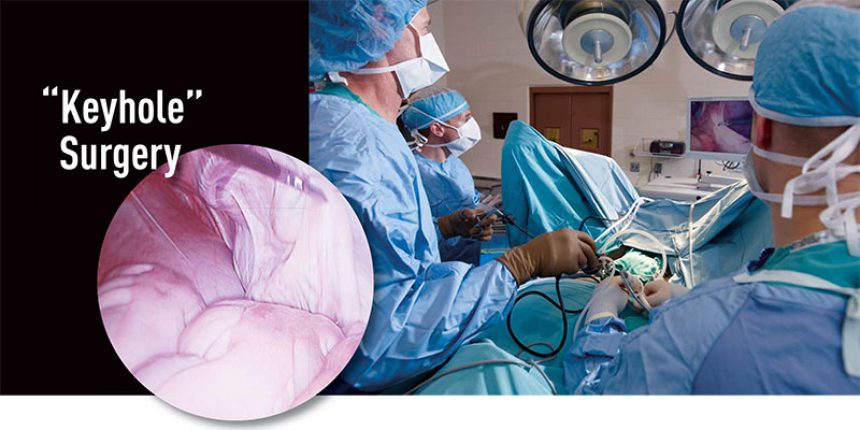
The rapid progress in minimally invasive surgery in people is paying dividends for horses.
“There are a growing number of pro- cedures that can be done laparoscopically in horses,” said Dr. John Caron an equine orthopedic and soft tissue surgeon with an avid interest in the area of minimally invasive surgery. “With more experience with this type of surgery, we are learning that, in addition to being associated with less postoperative pain and inflammation, in some instances it provides a clearly better alternative to con- ventional open surgery.”
A good example of the usefulness of laparoscopy is the surgical management of a “gelding” with no visible testicles that acts like a stallion and has an elevated blood tes- tosterone level, he said. Affected horses often have an abdominal testicle and can undergo a thorough exploratory examination and removal of the testicle (cryptorchidectomy) through a set of three incisions totaling an inch and a half or less in length.
“With laparoscopic surgery, there is no guessing,” Caron continued. “We can find and remove any remaining testicular tissue safely and easily with hemorrhage control assured by direct visualization. There is less postoper- ative swelling and risk of complications. This technique is safe, reliable and, with experi- ence, takes no more time than the traditional method.”
Similar advantages can be realized for the removal of ovarian tumors in mares. “The two big advantages of the minimally invasive approach to ovariectomy (removal of ovaries) in mares are assured control of bleed- ing and much better pain control,” he said. “These mares do not show the signs of post- operative pain that was typically the case with open ovariectomy. The principal difference is that we are able to visualize local anesthetic injection in the tissues around the ovary — we get it in the right place in a sufficient volume before any dissection is conducted.
“The main problem with laparoscopic sur- gery is that the technical manipulations are rather different from those of conventional surgery and adapting to limitations of work- ing in a two-dimensional environment takes some time and effort; however, the results seem well worth the effort.”
In addition to introducing a number of established laparoscopic procedures to MSU, Caron has developed a number of innovative techniques. Recently, he has adapted a laparoscopic technique for incisional hernia repair in people to horses.
“Unfortunately, from time to time, horses develop a hernia after colic or other abdomi- nal surgical procedure. Conventional open repair with the insertion of a prosthetic mesh has been associated with disappointingly fre- quent complications such as fluid accumula- tion and drainage, infection, and even failure of the repair. By placing and securing the hernia patch laparoscopically, the extensive soft tissue dissection that used to be required is avoided and complications appear corre- spondingly reduced.
“To date, our results with laparoscopic hernia repairs have been very encouraging. This may well become the standard method for repair of these hernias in the future,” he said.
The list of conditions of the chest and abdomen that can be managed by minimally invasive techniques in horses is growing ( see box above).
Here are videos of some laparoscopic procedures:
